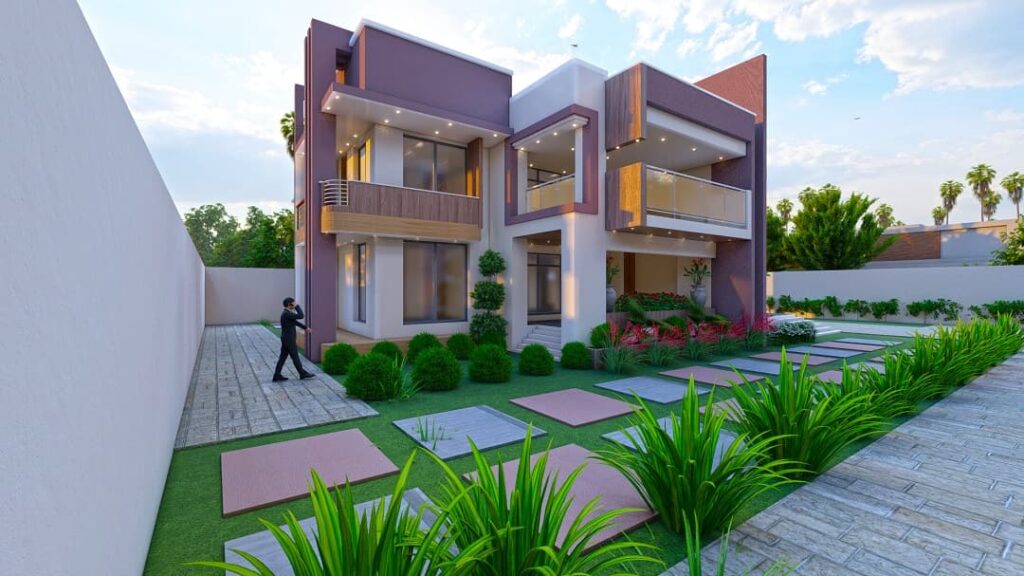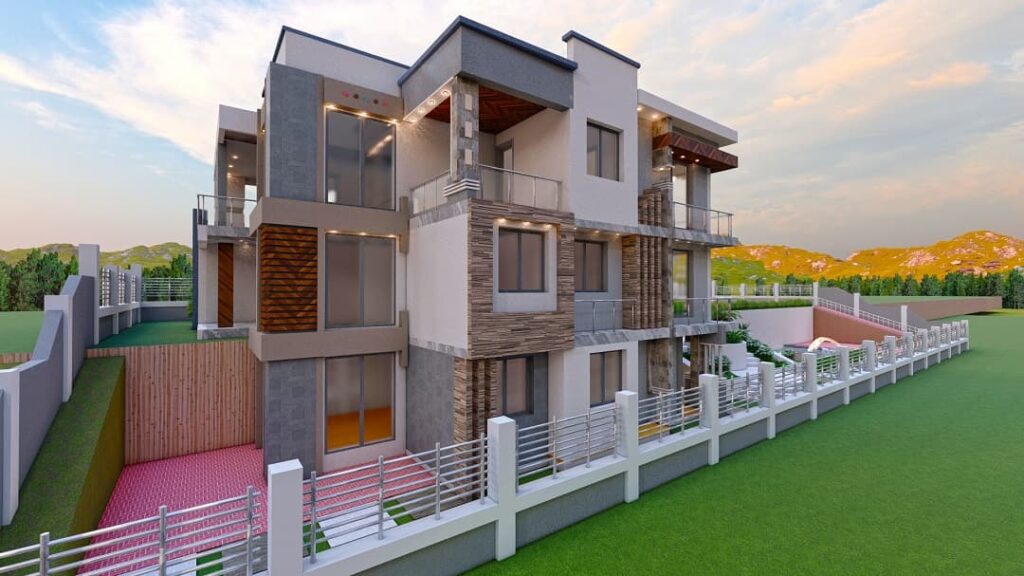Table of Contents
Introduction to the Construction Process
The construction process is a complex and multifaceted endeavor that involves various stages, from initial planning to the final handover of the completed building. Whether you’re constructing a residential home, an office building, or a commercial facility, understanding the construction process is crucial for a successful project. This article provides a comprehensive step-by-step guide to the construction process, breaking it down into pre-construction, construction, and post-construction stages.

Pre-Construction Stage
Building Plan
The first step in the construction process is creating a detailed building plan. This plan is essential as it outlines the project’s scope, design, and specifications. It involves collaborating with architects, civil engineers, electricians, and plumbers to ensure all aspects of the construction are accounted for. The building plan helps anticipate the features and functions of different parts of the project, ensuring a smooth construction process.
Budget Estimation
Budget estimation is a critical aspect of the pre-construction stage. After the building plan is completed, a construction estimator surveys the project to determine the cost of materials, machinery, and labor required. The estimator considers the quality and quantity of materials needed and provides a budget that includes all necessary expenses. If financial resources are limited, securing a pre-approval loan may be necessary to avoid cash flow issues during construction.
Land Acquisition
Acquiring land is another crucial step in the pre-construction stage. The location of the land should be suitable for the project’s requirements. Factors such as the size of the building, proximity to raw materials (for industrial projects), and accessibility are important considerations. Conducting feasibility studies and ensuring the land is free from legal and environmental issues are essential steps before finalizing the purchase.
Documentation
Proper documentation is vital to avoid legal complications during and after construction. This includes obtaining the necessary permits and approvals from local authorities. Required documents may include land survey reports, soil test reports, architectural drawings, structural reports, and certificates of undertaking by civil engineers. Ensuring all documentation is in order helps prevent delays and potential legal issues.
Construction Stage
Site Clearing
The construction stage begins with site clearing, which involves removing any obstructions such as trees, debris, and old structures from the land. For large sites, heavy machinery like bulldozers and excavators may be required. Proper site preparation ensures a smooth construction process by providing a clean and safe working environment.
Foundation
The foundation is the most crucial part of any building, as it supports the entire structure. Construction engineers carefully design and construct the foundation to ensure it can bear the building’s load. Soil testing is conducted to determine the soil’s bearing capacity, and the foundation is reinforced with concrete to provide stability and strength.
Plinth Beam and Slab
Once the foundation is in place, a plinth beam and slab are added to reinforce the structure further. The plinth beam helps distribute the load evenly and protects the foundation from moisture and cracks. It also provides a level base for constructing the walls and columns of the building.
Superstructure
The superstructure includes the columns and beams that support the building above the foundation. Columns are constructed up to the slab level, and a waterproof coating is applied to prevent water infiltration. The superstructure provides the framework for the rest of the building, including the walls, roof, and floors.
Brick Masonry Work
Brick masonry work involves constructing the building’s walls using bricks, concrete blocks, or other materials specified in the architectural plan. Masons use cement mortar to bind the bricks together, creating a strong and durable structure. Openings for doors and windows are also created during this stage.
The Lintel
A lintel is a horizontal beam placed across door and window openings to support the load above them. It is constructed after the walls are built and provides additional structural support. The lintel ensures the stability of the openings and prevents cracks from forming in the walls.
Roof Coating
The roof coating is applied to protect the building from weather elements and provide insulation. Different types of roofing materials, such as tiles, metal sheets, or shingles, can be used depending on the design and budget. Proper roofing ensures the building remains dry and comfortable, protecting the interior from rain, wind, and heat.
Electrical and Plumbing
Electrical and plumbing work is carried out after the basic structure is complete. This involves installing wiring, pipes, and fixtures for electrical and plumbing systems. These installations are usually hidden within the walls and floors, with only the endpoints visible. Ensuring proper installation at this stage prevents issues such as water leaks or electrical faults later on.
Exterior and Interior Finishing
Exterior finishing includes plastering the external walls, installing cladding, and adding decorative elements. Interior finishing involves plastering internal walls, and installing drywall, ceilings, and insulation. These finishes not only enhance the building’s appearance but also provide structural strength and protection from environmental factors.
Flooring
Flooring work begins once the exterior and interior finishes are complete. Various flooring materials, such as ceramic tiles, marble, wood, or vinyl, can be used depending on the design and functionality of the space. Proper flooring adds to the building’s aesthetics and provides a durable, easy-to-maintain surface.
Painting
Painting is the final step in the construction process. It involves applying paint to both the interior and exterior surfaces of the building. Painting enhances the building’s appearance and provides protection against weather conditions, moisture, and wear and tear. Using high-quality paint ensures a long-lasting and attractive finish.
Post-Construction Stage
The Walk-Through
After the construction work is complete, a thorough walk-through is conducted to ensure all project specifications have been met. The contractor and the architect inspect the building to verify that everything is in order and that the construction meets the required standards. Any issues or deficiencies are noted and addressed before the final handover.
Handover
Once the building passes the final inspection, it is handed over to the owner. The contractor provides the owner with all necessary documents, including blueprints, operation manuals, and warranties. The owner is given time to inspect the building and ensure they are satisfied with the work. Training and support may also be provided to help the owner understand how to operate and maintain the building.
WajenziProfessional Company Limited: Your Best Choice for Building Construction in Tanzania
When it comes to building construction in Tanzania, WajenziProfessional Company Limited stands out as the best choice. With years of experience and a commitment to excellence, WajenziProfessional has established a reputation for delivering high-quality construction projects on time and within budget. Here are some reasons why WajenziProfessional is the top selection for your building construction needs:
Expertise and Experience
WajenziProfessional boasts a team of highly skilled professionals, including architects, engineers, project managers, and skilled laborers. Their expertise ensures that every aspect of the construction process is handled with precision and care. With a proven track record of successful projects, WajenziProfessional has the experience needed to tackle any construction challenge.
Quality Assurance
Quality is a top priority for WajenziProfessional. They use the highest quality materials and employ stringent quality control measures throughout the construction process. This commitment to quality ensures that the final product is not only aesthetically pleasing but also durable and safe.
Comprehensive Services
WajenziProfessional offers a wide range of construction services, from initial planning and design to final finishing and handover. Their comprehensive approach means that you can rely on them for all your construction needs, making the process seamless and stress-free.
Timely Delivery
Meeting deadlines is crucial in the construction industry, and WajenziProfessional understands this. They are known for their punctuality and ability to complete projects within the agreed timeframe. This reliability makes them a trusted partner for any construction project.
Customer Satisfaction
WajenziProfessional places a strong emphasis on customer satisfaction. They work closely with clients to understand their needs and preferences, ensuring that the final result meets or exceeds expectations. Their commitment to customer service has earned them a loyal client base and numerous positive reviews.
Competitive Pricing
Despite their high standards and comprehensive services, WajenziProfessional offers competitive pricing. They provide transparent and detailed quotations, ensuring that clients understand the costs involved and can make informed decisions. WajenziProfessional strives to deliver value for money, making them an affordable choice without compromising on quality.
Summary
The construction process is a complex and multifaceted journey that involves several stages, from initial planning to the final handover of the completed building. Understanding this process is crucial for ensuring a successful construction project. Here’s a brief recap:
Pre-Construction Stage:
Building Plan: Detailed planning involving architects, engineers, and other professionals.
Budget Estimation: Determining the cost of materials, labor, and machinery.
Land Acquisition: Securing suitable land for the project.
Documentation: Obtaining necessary permits and approvals.
Construction Stage:
Site Clearing: Preparing the land by removing obstructions.
Foundation: Building a strong base to support the structure.
Plinth Beam and Slab: Adding reinforcement to the foundation.
Superstructure: Constructing columns, beams, and walls.
Brick Masonry Work: Erecting the visible structure of the building.
The Lintel: Providing additional support over openings.
Roof Coating: Protecting the building from weather elements.
Electrical and Plumbing: Installing hidden systems for functionality.
Exterior and Interior Finishing: Plastering, cladding, and decorating.
Flooring: Installing durable and attractive flooring materials.
Painting: Applying paint for protection and aesthetics.
Post-Construction Stage:
The Walk-Through: Inspecting the completed building.
Handover: Officially transferring the building to the owner.
Throughout this process, meticulous attention to detail and coordination among various professionals are key to achieving a successful outcome.
FAQs
What is the first step in the construction process?
The first step is the building plan, where detailed planning and collaboration with professionals ensure the project’s success.
Why is budget estimation important?
Budget estimation helps determine the cost of materials, labor, and machinery, ensuring financial resources are adequately allocated.
What is the role of documentation in construction?
Documentation ensures legal compliance and prevents potential legal issues, providing proof of ownership and necessary permits.
Why is the foundation crucial in construction?
The foundation supports the entire structure, providing stability and strength. A strong foundation is essential for the building’s longevity.
How does WajenziProfessional ensure quality in construction?
WajenziProfessional uses high-quality materials, employs stringent quality control measures, and has a team of experienced professionals to ensure top-notch construction quality.
What makes WajenziProfessional a top choice for building construction in Tanzania?
WajenziProfessional is known for its expertise, quality assurance, comprehensive services, timely delivery, customer satisfaction, sustainable practices, and competitive pricing.
Conclusion
construction process is an intricate and detailed endeavor requiring careful planning, execution, and collaboration. For those in Tanzania seeking a reliable and professional construction company, WajenziProfessional Company Limited stands out as the best choice. With our commitment to quality, customer satisfaction, and sustainable practices, We ensure a seamless and successful construction experience from start to finish. CONTACT US NOW

